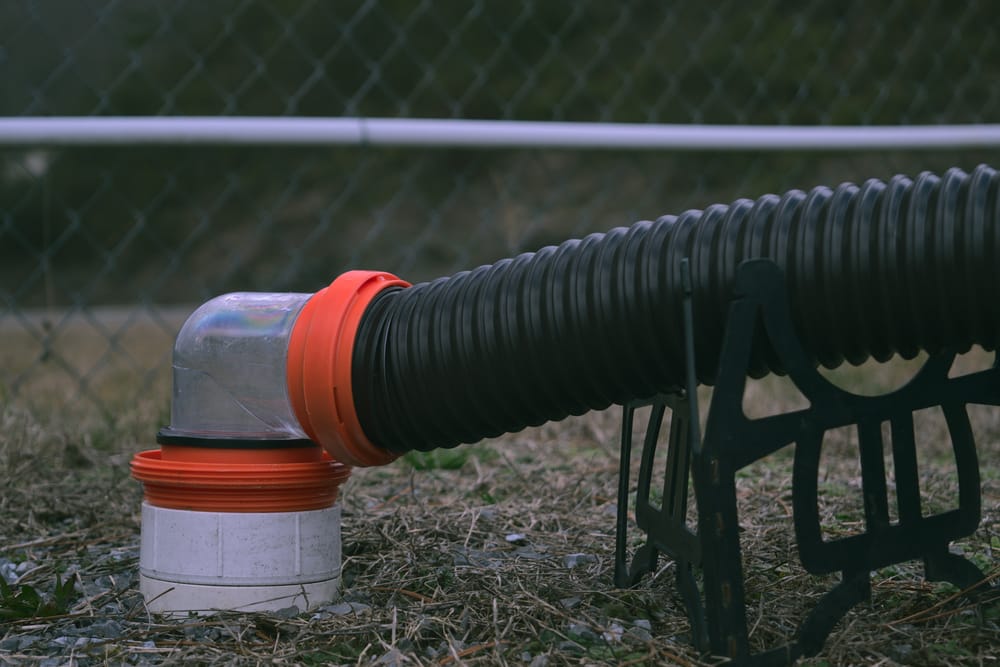
When it comes to going out for camping trips, there are tons of things that people should look out for. Packing all of the equipment that will be required is necessary. Although, you have to first consider where you will be going and how many people will be traveling with you. Aside from this, storing all of this equipment in a small vehicle can also be quite difficult.
This is why you will notice that most camping enthusiasts own larger vehicles like motorhomes or RVs. These allow them to store all of their luggage without any issue. Additionally, you have access to electrical outlets that can be used to power up your appliances. There are numerous features provided on these vehicles that are mostly focused on campers. Although, there are also some problems that you can run into when traveling in these motorhomes.
RV Sewer Hose Freezing
Most RVs and motorhomes are quite large which is why they have several rooms in them. This includes a bedroom, kitchen as well as a bathroom. This allows people to cook for themselves, rest whenever they want to, and even take baths.
Although, the water supply in these vehicles is not unlimited and you have to fill up its tank before your trip. The user has to then keep a check over their supply so that they do not run out of water. One common problem that people run into is that their RV sewer hose keeps freezing. This usually happens when you are traveling in an extremely cold climate.
The temperature around your vehicle being under water’s freezing point causes the water molecules to become solid. This can be quite annoying as your hose can get clogged with ice and it can even damage your pipelines. This is why we will be providing you with some steps to keep your RV sewer hose from freezing.
How to Keep RV Sewer Hose from Freezing?
1. Wrap Sewer Hose Using Heated Coil
One of the most common methods that people go with is wrapping a heated coil around their sewer hose. This will help you in preventing water from freezing around your hose but there are a lot of things to keep in mind. First, you have to gather all the equipment required to even complete this step. This includes having a heater coil with you as well as something to keep it in place.
You can use electrical tape to ensure that the heater coil stays in its place. After it has been powered up, you will notice that no water will freeze around the hose. Insulating the pipe is also important as there is a chance that large chunks of ice can form inside it. The process requires a lot of time and effort but you can also visit a workshop to get all of this done.
2. Use Antifreeze
Another option that you can go with is using antifreeze. Keep in mind that most people prefer this method because it is both easier and it also protects your pipelines. The chemicals in antifreeze lower the freezing point for water which allows it to remain in its liquid state even at lower temperatures. Though, you have to keep in mind that a sufficient ratio of this solution should be added to your supply.
Additionally, you will have to keep on adding this to ensure that the ratio for antifreeze does not lower. The chemical will also start to lose its effectiveness over time and require a replacement so keep that in mind. Aside from this, purchasing the solution from a reliable brand is also important as tons do not work properly. The major downside to using it is that you will have to dump all of your tank water after your trip.
3. Install A Heated Sewer Hose
Finally, one last option that you can go with is installing a heater sewer hose on your vehicle. These act the same as the first step. The only major difference is that you do not have to go through any hassle and the device will start working as soon as you install it.
This can be much better but the equipment will cost you a lot. Considering this, it is only recommended that you purchase one if you will be traveling in cold climates frequently. Other than that, there is no reason to spend this much on a device like this.

